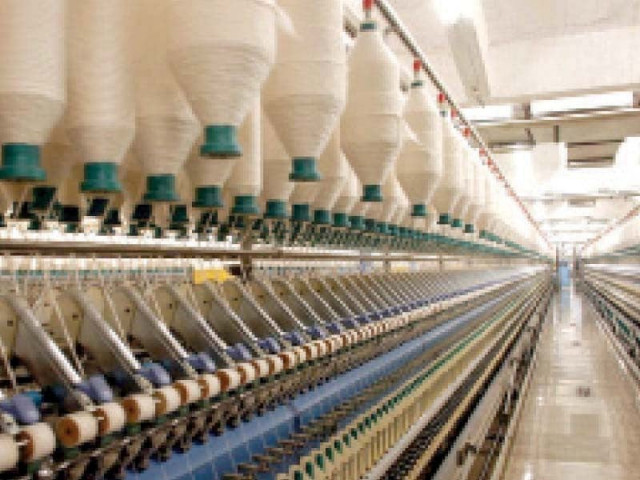Textile industry unveils $50b export plan
Calls for removing barriers, providing incentives to increase access to global markets

The textile industry has submitted an ambitious plan to the government for achieving a $50 billion export target as it comes up with a set of recommendations for removing barriers and providing incentives to extend the outreach in international markets.
The industry has proposed the setting up of 1,000 garment plants on a fast track to create exportable surplus and diversify the export basket. Each plant will consist of 500 stitching machines with an investment of $5 million, produce garments to make exports of $20 million per annum and generate 1,000 jobs.
In a presentation given to the Export Advisory Council for Textiles, the industry proposed a “no-cost-no-commitment” incentive package, featuring proposals such as free office spaces for international brands and retailers to encourage their physical presence in Pakistan.
It pointed out that the cost of first six months would be covered through upfront financing from the Export Development Fund along with a rebate of 0.1% of the sourcing value for firms acquiring merchandise worth over $50 million from Pakistan.
It was highlighted that the US fashion industry was shifting from a strategy called “China plus Vietnam plus many” to a new system named “Asia plus rest of the world”. Finding new sources for textile products other than China is a top priority of the US fashion firms.
Some firms were of the view that “Made in China” would gradually become “Managed by China” as Chinese manufacturers were looking at the possibility of outsourcing production. This presents opportunities to Pakistan as well as it can directly supply goods to international firms and also cater to the needs of Chinese companies looking to outsource production.
Textile companies are expected to increasingly source clothing made from recycled or other sustainable fibres. As many as 60% of firms plan to sustainably increase the sourcing of apparel made from sustainable or recycled textile materials over the next five years.
Demand for cotton and other sustainable fabrics is likely to rise compared to the less sustainable and biodegradable manmade fibre. High sourcing costs and low profit margins are the top challenges to sourcing clothing made from recycled or other sustainable fibres.
There are growing calls for policy support for sourcing such clothing, such as preferential tariff rates and guidance on sustainability and recycling standards.
Read: Pakistan, China forge textile ties
Meanwhile, Pakistan’s textile industry has urged the government to announce a separate power tariff category for exporters, excluding cross-subsidies, stranded costs and other inefficiencies.
It called for ensuring adequate supply of re-gasified liquefied natural gas (RLNG)/ locally produced gas at regionally competitive prices and transition to zero emissions for exporting industries.
Net zero greenhouse gas emissions are required across the value chain to continue exporting to western markets beyond 2030.
In addition, traceability across the textile and apparel value chain is increasingly sought by importers. This necessitates a mandatory and centralised track and trace system. The system should give priority to upstream sectors like cotton and ginning factories to ensure full compliance along with a fully operational National Compliance Centre to monitor environmental and social compliance.
The textile industry has sought exemption from sales tax for export-sector inputs to expedite processes and become competitive in global markets. It also called on the Federal Board of Revenue to process all FASTER refunds within the promised 72-hour time frame.
It demanded the refund of all pending dues in order to create a favourable and liquid business environment.
It floated the idea of setting up free commercial zones with simplified procedures to facilitate exports, reduce turnaround time and centralise export-related services. It asked for simplifying and digitalising all import and export procedures to enhance efficiency.
The industry advocated the need for tax incentives and financing schemes like those provided by regional economies, which will result in some competitive advantage in relation to competitors like Vietnam, Bangladesh, India and Cambodia.
It emphasised that varieties of exportable surplus should be increased and textile and apparel exports diversified beyond cotton-based products.
Published in The Express Tribune, December 9th, 2023.
Like Business on Facebook, follow @TribuneBiz on Twitter to stay informed and join in the conversation.



















COMMENTS
Comments are moderated and generally will be posted if they are on-topic and not abusive.
For more information, please see our Comments FAQ